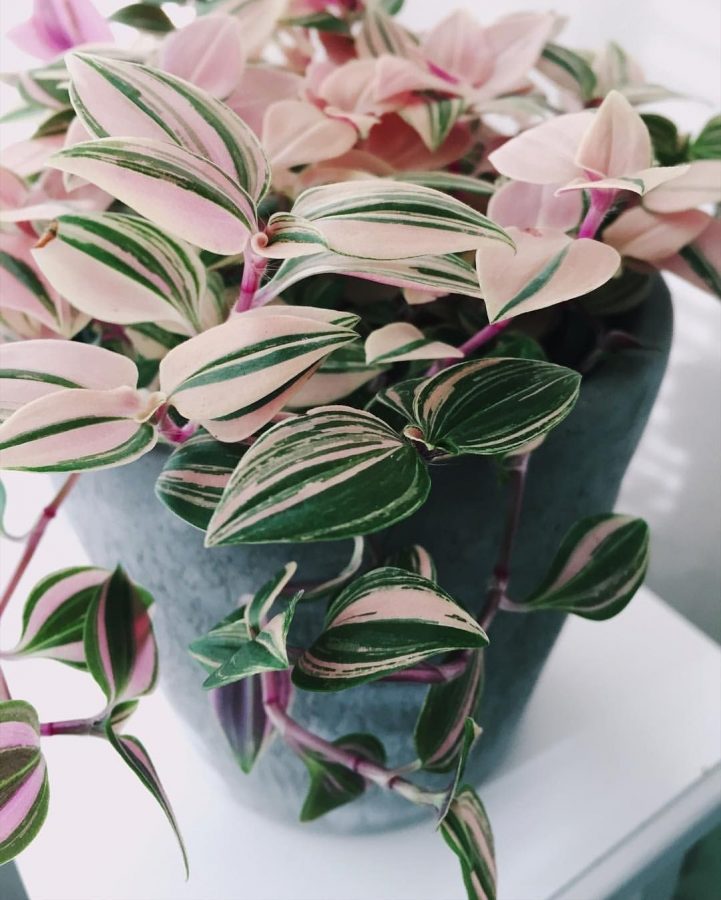A college-friendly plant guide for the organically disinclined
I’ve killed every plant I’ve ever touched. However, plants are visually pleasing and can vastly improve a dorm space, so I’ve compiled a foolproof guide to owning plants at college.
First, it’s important to assess your space. For instance, most of us at Guilford live in little cement blocks with as much light as rural Swedish villages during winter in the 18th century. Ask yourself: where is the best light source? Where can you safely set a plant where it won’t be knocked over by inebriated roommates? How moist or dry is your room? And most importantly, how often will you forget to water your little green children?
Once you’ve surveyed your room, make sure your roommates are on board with your new plant friends.
“It is best to ask your roommates before covering a common area with plants, but most people are not going to turn down that offer,” said Marian Cooper ’21, former Guilford Garden Center employee, in an email interview. “Houseplants are a fun little way to bond with roommates. It’s like getting a pet but with much, much lower stakes.”
If you’ve surpassed these two hurdles, it’s time to start looking at plant types. This is the most exhaustive stage of the process, given that there are approximately 375,000 species of plants, according to scientist and author Michael Annisimov. Reading through
each and every one of their Latin names is a pretty good way to procrastinate on homework, but if you’d like an abridged path to plant ownership, here are some easy starters.
Ally Thring suggests Pothos, a viney family of plants which sport beautiful, mottled leaves.
“…[they’re] ridiculously easy to maintain,” said the Guilford senior in an email interview. “They don’t need a lot of light or attention, and they grow super huge.”
Snake Plants (also known as mother-in-law’s-tongue) are a large family of succulents which require very little care.
“Snake plants are easy because you don’t need to water them very often (once a month or less) and they do not need much light,” wrote Cooper. “This would make them great to add color to an Olds apartment.”
Succulents and cacti, zillenial classics, are dorm room staples. I stole one from Chad Phillips, a Guilford film professor, earlier this year, but my cat
ate an entire leaf within six hours and I unfortunately had to re-gift it.
“Succulents and cacti are easy if you have light because they do not need much water, so you can pretty much forget about them,” says Cooper.
Personally, I disagree—not including my cat’s crunchings and munchings, I’ve killed about 12 succulents.
Fittonias, or Nerve Plants, are beautifully leafy plants with defined, colorful veins. Cooper recommends Fittionias because, “they are really dramatic when they need to be watered.”
When I asked senior Brandon Jones about his plant recommendations, his response was less than satisfactory.
“I don’t know anything about plants,” he said. “I don’t know why you keep insisting on asking me this.”
My personal favorite, and the only plant I have managed to keep alive for more than two months, is the mysterious air plant. Air plants (or Tillandsia) do not require soil, and can be simply placed in a holder or glass globe. They require a fair amount of light, but only need to be spritzed with water every few days, and left to soak in a fertilizer bath once a month. Though sensitive to overwatering, they are happy to be neglected and therefore suitable for double majors or anyone fortunate enough to be involved with the history department.
For a more unique choice, you could check out Cooper’s favorite plant, the fuzzy Old Man Cactus, or Thring’s top choice, the colorful Pink Tradescantia. When asked about his pick of plant, Jones responded with a depressing lack of enthusiasm.
“Please stop asking me questions, I am literally trying to do my thesis,” he said. “I don’t know… grass, I guess.”
Once you’ve determined what kind of plant you want to buy, do some research prior to obtaining the leafy fellow, paying attention to any special requirements. Take these seriously (I didn’t). If your dorm room, like mine, has a disappointing amount of natural light, Thring suggests substituting a small UV light.
Plants can be obtained from a variety of locations (including the internet and Walmart) but Cooper recommends the right across from campus behind the McDonald’s. I visited the establishment once during my freshman year to purchase a plant whose species I never determined and it promptly drowned, but the employees were extremely friendly and let me pet the cats who live there. Support local businesses!
There are, however, some establishments not as suitable for purchasing plants. “Avoid getting plants from department stores,” said Thring. “They’re usually rootbound or can come with pests or root rot.” (I have no idea what that means.)
If you’re somehow still lost after reading all of this stellar, flawless advice, Cooper has a solution: “…put on a few masks and walk over to the Guilford Garden Center… Tell the staff members you are interested in getting some plants but need some guidance and they will be overjoyed to help you out.”










